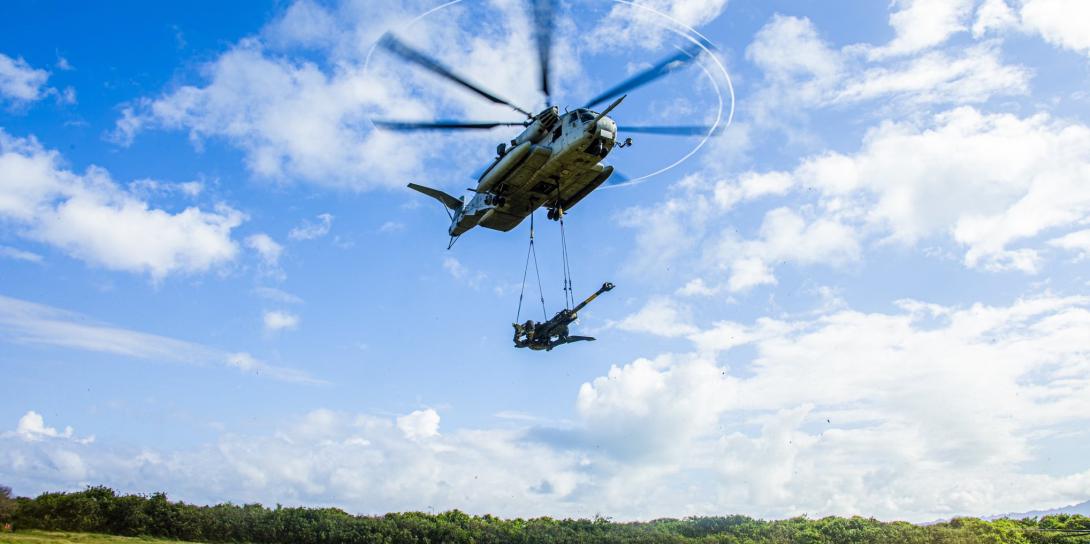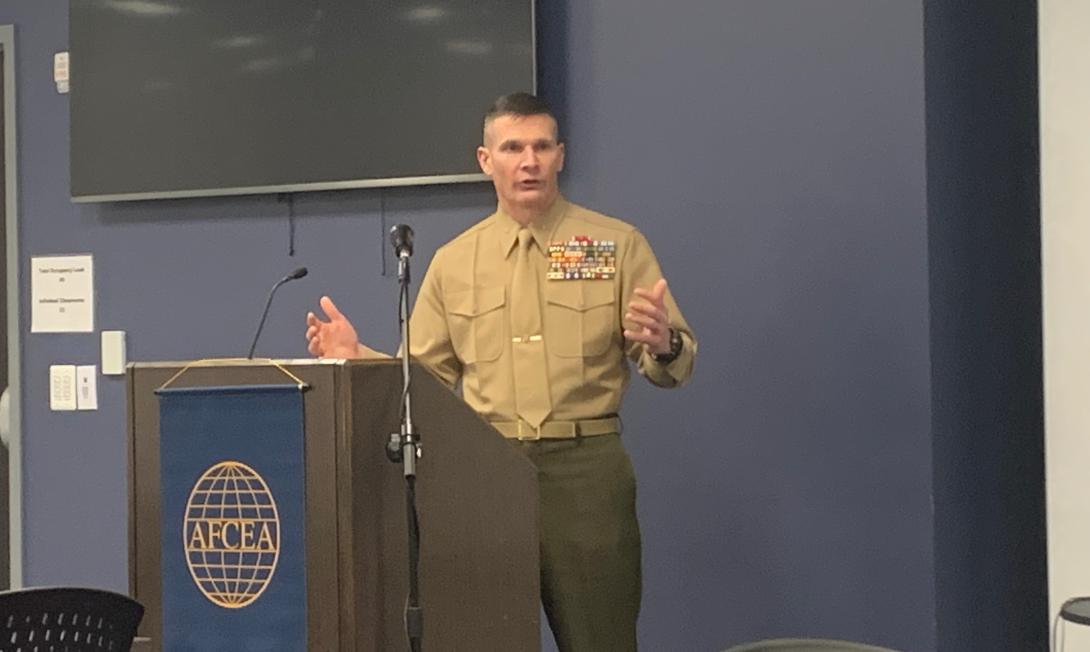Marine Littoral Regiment Concept Takes Center Stage
The U.S. Marine Corps is focusing its activities to support more expeditionary warfare to guard against near-peer adversaries, such as China and Russia. The service’s work is all part of a greater force construction effort, which includes a new infantry battalion construct that leaders are developing to be capable of operating in a more globally distributed fashion in a contested maritime environment. One particular warfighting group that the service is creating is the so-called Marine Littoral Regiment.
“We're creating the Marine Littoral Regiment, or MLRs, [to be] organized, trained and equipped to accomplish sea denial and sea control within actively contested maritime spaces,” explained Brig. Gen. Mark Clingan, USMC, assistant deputy commandant, Combat Development and Integration, and deputy commanding general, Marine Corps Combat Development Command. “The MLR is uniquely designed to maneuver and persist inside of a contested maritime environment where its primary mission will be to conduct denial operations as part of a larger Naval Expeditionary Force.”
Gen. Clingan spoke at AFCEA Quantico-Potomac’s chapter event on January 28, held at the Cyber Bytes Foundation. He shared that Marine Corps leaders are flushing out various proposed concepts for the MLRs, which are being purposely built to execute expeditionary, advanced base operations globally, but especially in the Indo-Pacific.
The service plans to stand-up the first of three planned MLRs in March. Located in Hawaii, the first one will be called MLR III and will be under the III Marine Expeditionary Force (MEF) in Marine Corps Forces, Pacific.
“It will be the first of its kind in the Marine Corps,” Gen. Clingan shared.
The MLRs will have the ability to conduct reconnaissance and counter-reconnaissance. Also, these small units will aim to gain and maintain contact with targets for the joint force or to deploy their own organic long-range anti-ship missiles.
Gen. Clingan acknowledged that anytime the service stands up a new organization, it is not without some difficulties. “When you're doing something for the first time, there is a fair amount of discovery learning,” he stated. “And the Marine Corps has been experimenting with a lot of these MLR concepts for a while, but when you take it from concept, experimentation and put it into standing up a unit for the first time, there are some unique challenges. We have been through this before, so this is nothing new. The challenge is that we have to get a lot of these systems online, so even if you have the organization, and you have the appropriate hardware, you also have to have the training and education to go ahead and make sure that when the Marines show up, they know how to use that piece of gear. The last thing that you want is discovery learning on a multimillion dollar piece or gear. So, these are all the challenges going on right now as we start to build the first MLR.”
The general added that the subsequent MLRs are slated to be based in other Pacific theater locations. “We simply can't travel to compete and we can't commute to the battlefield,” he said. “We must be persistent inside [the Indo-Pacific region] for clear situational awareness and deterrence. There's a physical and geographic aspect to deterrence and reassuring allies. You have to be there to be present. And the Marine Corps is ideally positioned and equipped to be the stand-in force, with small units of Marines spread throughout the battle space.”
It is an ideal beginning to have MLR III in the III MEF, as those Marines already “eat, sleep and train inside the enemies' weapons engagement zone,” operating in the contested multidomain maritime environment in the Indo-Pacific, Gen. Clingan noted. “It’s a unique location because it's in the Pacific, but it is still on U.S. soil and we can go ahead and learn in that training environment. But the intent is, as we create more MLRs, is to have them go ahead and position forward or have elements of them in position and rotate forward.”
That kind of positioning will require more integration with the other services, as well as with allies, he suggested. “We're not in this alone and so, that's going to require some coordination across the board.”
In a recent call with SIGNAL Magazine, Brig. Gen. Benjamin Watson, USMC, explained that they intend MLR III to become the basis for the service’s experimentation over the next couple of years for not only refining the Marines’ concept of expeditionary, advanced base operations, but also for fine-tuning its own designs. Gen. Watson is the commanding general of the Marine Corps Warfighting Laboratory and vice chief, Futures Directorate, Office of Naval Research.
“The idea for the MLRs is based off of taking a traditional regiment of several thousand Marines, shrinking it in size and focusing it on purpose to be able to execute expeditionary, advanced base operations and to operate with and provide enabling capabilities, both lethal and nonlethal, to the Navy and the joint force within that contested maritime environment,” Gen. Watson offered.
The new types of Marines that the service is developing will be distinct from the traditional Marine Expeditionary Units, or MEUs, the service’s expeditionary quick reaction forces that are deployed for humanitarian assistance, disaster response or crucial combat missions. Instead, those specializing in near-peer warfighting will play a key role in sea denial and enabling joint force access and targeting, Gen. Watson stated.
“The force that we are talking about now is one that will be enabled by smaller littoral maneuver platforms, such as the light amphibious warships currently in development and smaller surface craft—although they would not be fundamentally tied to those,” Gen. Watson said. “They would operate in a much lower signature fashion than your traditional MEU and be specifically focused on peer adversaries. [They would] not operate and not necessarily be developed as sort of a ‘Swiss Army knife’ capability that could do everything from humanitarian assistance and disaster response all the way up to high-end conflict as required. The [new] stand-in force that we're talking about out in the Western Pacific, and has application globally, would be one that is specifically designed to operate and persist inside a highly contested environment, what we call the adversaries’ weapons engagement zone. [They] would contribute to sea denial and then be able to specifically enable access and targeting, if things escalate.”
Gen. Clingan said, “We're really excited because the MLRs will be capable of conducting EABO [expeditionary, advanced base operations], and in the end, these abilities will impose costs on our peer threats, and they will be a credible deterrent in competition with the ability to dominate and win in conflict.”






Comments